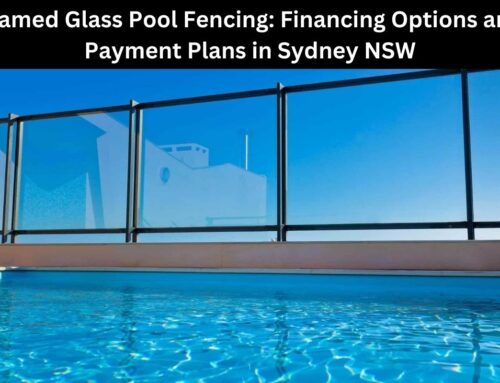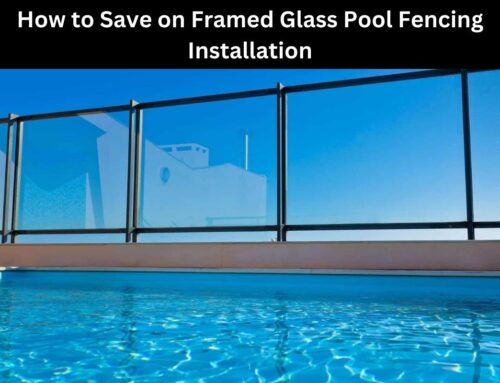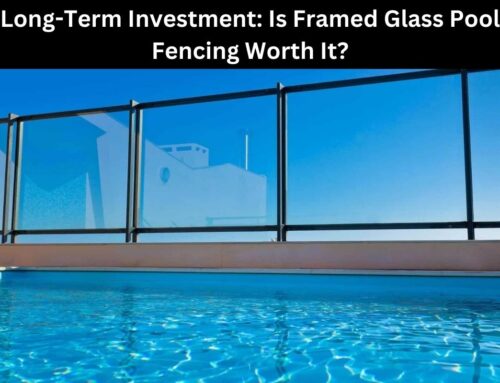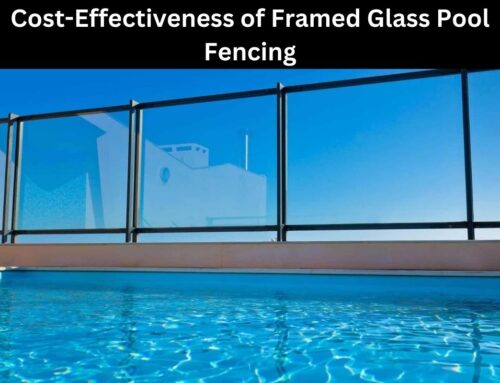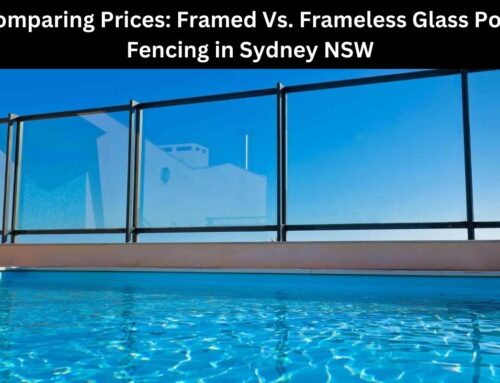Table of Contents
When it comes to enhancing the safety and beauty of a pool area, semiframeless glass pool fencing is a popular choice. This type of fencing provides a sleek and modern look, while still maintaining the necessary security measures.
However, before embarking on a project to install semiframeless glass pool fencing, it is important to understand the material costs involved.
In this article, we will explore the different types of glass used in semiframeless pool fencing, as well as the frame materials and additional components required. We will also delve into the factors that can affect material costs, such as the size and shape of the pool area, as well as any customization options.
By understanding the various components and factors involved in semiframeless glass pool fencing, readers will be equipped with the knowledge to make informed decisions and budget accordingly. Ensuring the safety of a pool area should be a top priority, and this article aims to provide a comprehensive analysis of the material costs associated with semiframeless glass pool fencing.
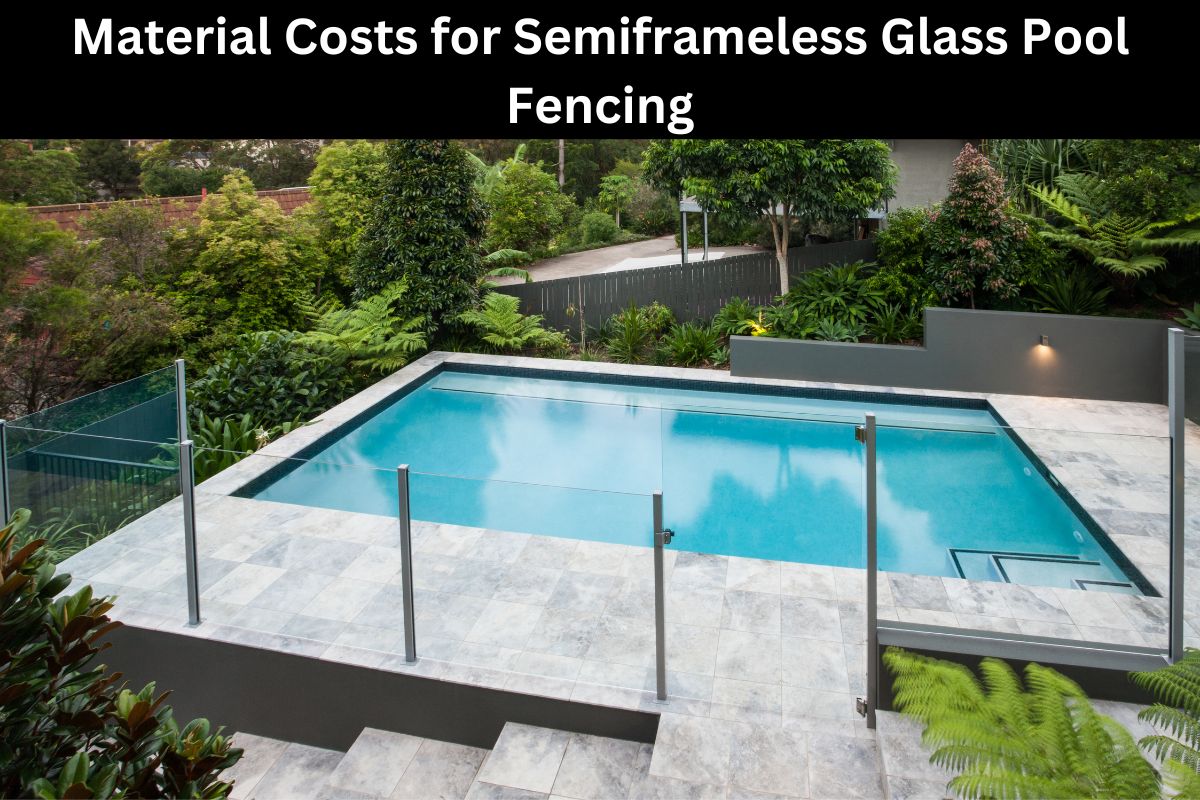
Key Takeaways
- The choice of glass type (tempered or laminated) and frame material (aluminum, stainless steel, or powder-coated steel) significantly impacts the material costs for semiframeless glass pool fencing.
- Additional components and hardware, as well as customization requirements, can also affect the overall material costs.
- The size and layout of the pool area should be taken into consideration when estimating material costs for semiframeless glass pool fencing.
- Consulting with professionals and obtaining multiple quotes can help in making an informed decision and potentially save costs.
Types of Glass Used in Semiframeless Pool Fencing
Different types of glass are commonly used in semiframeless pool fencing to ensure safety and aesthetics. One type of glass commonly used is tempered glass. Tempered glass is created through a process of heating and rapid cooling, which increases its strength and durability. This type of glass is designed to shatter into small, rounded pieces rather than sharp, jagged shards, reducing the risk of injury in case of breakage.
Another type of glass used is laminated glass. Laminated glass is made by sandwiching a layer of polyvinyl butyral (PVB) between two layers of glass. This PVB layer acts as a bonding agent, holding the glass together even when shattered. This prevents the glass from falling apart and provides an additional layer of safety.
Both tempered and laminated glass are highly resistant to breakage and are able to withstand the pressures and impacts typically encountered in pool fencing applications. These types of glass not only ensure the safety of individuals around the pool but also enhance the overall aesthetic appeal of the fencing.
Transitioning to the subsequent section about ‘frame materials for semiframeless pool fencing,’ the choice of glass is closely linked to the type of frame material used.
Frame Materials for Semiframeless Pool Fencing
Various frame materials are commonly used to construct semi-frameless pool enclosures. These materials are chosen for their durability, strength, and ability to withstand harsh outdoor conditions. The following are three commonly used frame materials for semi-frameless pool fencing:
- Aluminum: Aluminum is a popular choice due to its lightweight nature and resistance to corrosion. It is known for its strength and durability, making it suitable for withstanding the elements and providing stability for the glass panels. Additionally, aluminum frames can be powder-coated in various colors to match the aesthetic of the pool area.
- Stainless Steel: Stainless steel frames offer a sleek and modern look while providing excellent strength and resistance to corrosion. These frames are highly durable and require minimal maintenance. They are often used in high-end applications where aesthetics and performance are equally important.
- Powder-Coated Steel: Powder-coated steel frames provide a strong and durable option for semi-frameless pool fencing. The powder coating adds an additional layer of protection against corrosion and enhances the overall appearance of the fencing. This type of frame material is commonly used in commercial settings or where a more industrial look is desired.
These frame materials, along with additional components and hardware, contribute to the overall safety and functionality of semi-frameless pool fencing.
Additional Components and Hardware
One important aspect to consider when constructing a semi-frameless pool enclosure is the selection of appropriate components and hardware. These additional elements not only enhance the functionality and safety of the pool fence but also contribute to its overall aesthetic appeal.
When it comes to components, there are several key elements to consider. First and foremost, stainless steel or aluminum posts are commonly used to support the glass panels. These materials are chosen for their durability, corrosion resistance, and ability to withstand the harsh pool environment.
Additionally, high-quality glass clamps are essential for keeping the glass panels securely in place. These clamps should be made from a strong and reliable material, such as stainless steel, to ensure the structural integrity of the pool fence.
Other hardware components, such as gate hinges, latches, and handles, should also be of high quality to ensure proper functionality and safety. It is important to note that the selection of these additional components and hardware can significantly affect the overall material costs of a semi-frameless pool fence.
Moving forward, the subsequent section will explore the various factors that can influence the material costs of constructing a semi-frameless glass pool fence.
Factors Affecting Material Costs
Several factors can significantly impact the expenses associated with constructing a semi-frameless pool enclosure. One of the main factors is the choice of hardware components. The type and quality of hardware used, such as hinges, brackets, and clamps, can vary greatly in terms of price. Higher quality hardware may be more expensive, but it can also provide better durability and safety.
Additionally, the level of customization required for the pool enclosure can affect material costs. Custom designs or unique features may require special materials or additional fabrication, which can increase the overall expenses.
Another factor that influences material costs is the overall size and layout of the pool area. Larger pool areas will require more materials, such as glass panels and supporting posts, which can drive up the costs. Additionally, the complexity of the layout, such as curved or angled sections, may require additional materials and labor, further impacting the expenses.
Considering these factors, it is important for individuals to carefully assess their specific needs and requirements when budgeting for a semi-frameless pool enclosure. By understanding the impact of hardware choices, customization needs, and the size and layout of the pool area, individuals can make informed decisions and effectively manage their expenses.
In the next section, we will discuss cost comparison and budgeting tips to further assist in this process.
Cost Comparison and Budgeting Tips
Comparing prices and implementing effective budgeting strategies are crucial steps for individuals seeking to make informed decisions and manage their expenses when investing in a semi-frameless pool enclosure.
By comparing the costs offered by different suppliers, consumers can ensure they are getting the best value for their money without compromising on quality and safety.
Additionally, implementing budgeting strategies can help individuals allocate their funds wisely and avoid overspending.
To facilitate cost comparison and effective budgeting, consider the following tips:
- Obtain multiple quotes from reputable suppliers to compare prices and ensure competitive rates.
- Consider the long-term costs associated with maintenance and repairs when evaluating the total cost of ownership.
- Explore financing options or installment plans if the upfront cost of the semi-frameless pool enclosure exceeds your budget.
- Consult with professionals or pool enclosure experts to gain insights into cost-saving measures and identify any potential hidden expenses.
By following these tips, individuals can ensure they are making an informed decision while prioritizing safety and quality. It is important to invest in a reliable and durable semi-frameless glass pool enclosure to provide a secure and aesthetically pleasing environment for pool users.
Safety and Style Unite: Majestic Glass Semi-Frameless Pool Fencing
Unite safety and style in your pool area with Majestic Glass’ leading pool fencing with semi-frameless glass in Sydney. Our semi-frameless options merge the minimalist aesthetic of frameless designs with the robustness of traditional frames, offering a sophisticated and secure solution for your pool area. Employing high-grade glass, we guarantee both durability and aesthetic elegance. Visit our main services page to get a comprehensive understanding of our unwavering commitment to quality and the unique benefits of opting for a Majestic Glass semi-frameless pool fence.
Frequently Asked Questions on Material Costs for Semiframeless Glass Pool Fencing
Can I install semiframeless glass pool fencing myself, or do I need to hire a professional?
Installing semiframeless glass pool fencing requires professional expertise to ensure proper installation and adherence to safety standards. Attempting to install it yourself could lead to inaccurate measurements, weak structural integrity, and potential safety hazards.
Are there any specific maintenance requirements for semiframeless glass pool fencing?
Semiframeless glass pool fencing requires regular maintenance to ensure safety. This includes cleaning the glass panels, checking for any loose or damaged components, and ensuring the fence is secure. Regular inspections and repairs should be conducted to prevent accidents and ensure the longevity of the fence.
Are there any regulations or codes that I need to comply with when installing semiframeless glass pool fencing?
Compliance with regulations and codes is essential when installing semiframeless glass pool fencing. This ensures safety and adherence to legal requirements. It is imperative to research and follow local building codes and regulations to avoid penalties or accidents.
Can semiframeless glass pool fencing be customized to fit my specific pool shape and size?
Semiframeless glass pool fencing can be customized to fit specific pool shapes and sizes. This ensures a secure and aesthetically pleasing barrier that meets safety regulations. Professional installers can evaluate the pool area and tailor the fencing accordingly.
Is there a warranty available for semiframeless glass pool fencing?
A warranty is available for semiframeless glass pool fencing, providing assurance and peace of mind. This ensures that in the event of any defects or damages, the product will be repaired or replaced, promoting safety and long-term durability.
Conclusion
In conclusion, the material costs for semiframeless glass pool fencing can vary depending on several factors.
The types of glass used, frame materials, and additional components and hardware all contribute to the overall cost.
It is important to consider these factors when budgeting for a pool fence installation.
While some may argue that the cost of semiframeless glass pool fencing is too high, it is important to remember that this type of fencing provides a sleek and modern look while also ensuring the safety of the pool area.
Related Articles
Price Comparison: Semiframeless Vs Full Frameless Glass Pool Fencing

